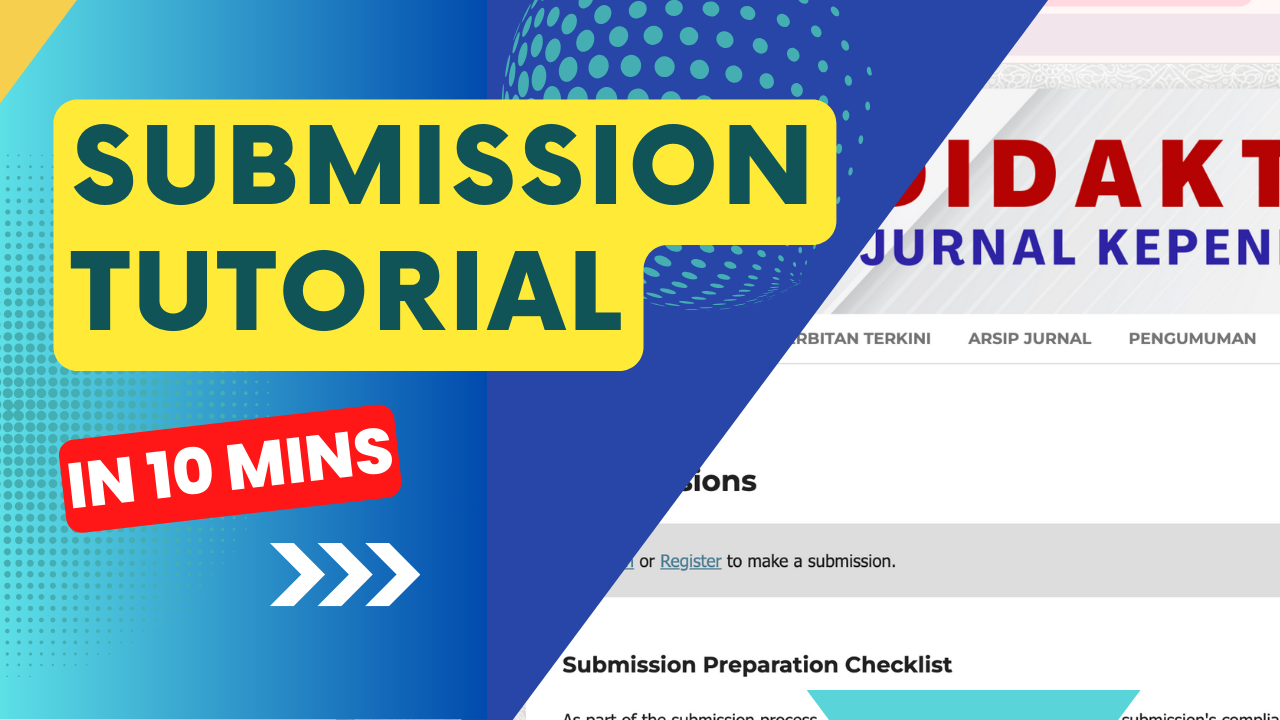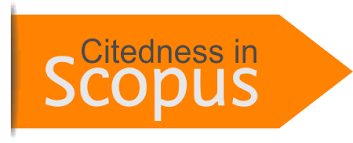Teaching Model Development of English Listening Skills by Using Lingoclip to Increase Students’ Listening Skills at SMP Swasta Pelita Kasih School Tanjung Morawa
Abstract
This research shows that there are several problems experienced by junior high school students in learning listening skills. This research aims to find out the development of listening teaching model using lingoclip in increasing listening skill.The researcher tried to reveal the problems that occur in the ability of junior high school students.Type of research was a class action research descriptive quantitative. Based on the results of the pre-test, the pre-test mean score was 56,94 and the mean score in the post-test was 80,47. It can be seen that the students' skill in listening by using AIR Learning model was increased. From these calculations, it can be inferred that there was a difference of students' scores before and after receiving the treatment. The development from the research is when using the AIR Learning model, the results obtained increased by approx. 48%. Based on the data analysis, the researcher found that AIR Learning can improve students’ skill in listening. As the result from the pre-test and post-test mean scores which were given. The improvement of mean score was 56,94 to 80,47. It means that there was a significant difference of achievement between the students who were taught by AIR Learning model and the students who were taught without AIR Learning model.The data also showed that students felt that AIR Learning model could help them in listening. Most of them also responded that they attempt to use AIR Learning model in their daily listening.
Metrics
References
Al Kindy, A. M. Z., Shah, I. M., & Jusoh, A. (2016). Journal homepage: http://www. journalijar. com INTERNATIONAL JOURNAL OF ADVANCED RESEARCH RESEARCH ARTICLE. International Journal, 4(1), 889–907.
Arikunto, S. (2006). Prosedur penelitian suatu pendekatan praktik. Jakarta: Rineka Cipta, 134.
Arikunto, S. (2010). Metode peneltian. Jakarta: Rineka Cipta, 173.
Bennett, W. (2003). Communicating global activism. Information, Communication & Society, 6(2), 143–168.
Chandra, A. (1999). Improving Listening Ability Through Songs of English Department of FBS IKIP Ujung Pandang.
Clark, V. L. P., Creswell, J. W., Green, D. O., & Shope, R. J. (2008). Mixing quantitative and qualitative approaches. Handbook of Emergent Methods, 363, 363–387.
Darti, D., & Asmawati, A. (2017). Analyzing students’ difficulties toward listening comprehension. English, Teaching, Learning, and Research Journal, 3(2), 211–228.
DeVito, J. A., & DeVito, J. (2007). The interpersonal communication book.
Dewi, R. S., & Anasy, Z. (2017). The Effect of English Captioned Video on Students’ Listening Comprehension (A Quasi-Experimental Study at the Eleventh-Grade Students of SMAN 4 Tangerang Selatan). International Conference on Education in Muslim Society (ICEMS 2017), 72–76.
Fahriany, F. (2014). The role of awareness in second language development. Journal on English as a Foreign Language, 4(1), 37–40.
Felder, R. M., & Brent, R. (2007). Cooperative learning. Active Learning: Models from the Analytical Sciences, 970, 34–53.
Field, J. (1998). Skills and strategies: Towards a new methodology for listening.
Guzman Martinez, R. (2010). Effects on teaching listening skills through videos to advanced students from the Foreign Language Departament at the University of El Salvador during the first semester 2010.
Hapsari, R. (2015). Upaya Meningkatkan Listening skills Melalui Nyanyian Pada Siswa Kelas II SDS Budi Wanita Setiabudi Jakarta Selatan.
Hargie, O. (2021). Skilled interpersonal communication: Research, theory and practice. Routledge.
Harmer, J., & KHAN, S. (1991). The Practice of English Language Teaching with DVD. A TESOL Publication of English Australia Pty Ltd, 24(1), 85.
Huda, M. (2014). Model-model Pengajaran Pembelajaran (Cet. 5). Yogyakarta : Pustaka Pelajar., 2014.
Iwankovitsch, R. (2001). The importance of listening. Language Arts Journal of Michigan, 17(2), 2.
Johansson, S., Werner, A., Åker, P., & Goldenzwaig, G. (2017). Streaming music: Practices, media, cultures. Routledge.
Kim, H.-S. (2015). Using Authentic Videos to Improve EFL Students’ Listening Comprehension. International Journal of Contents, 11(4).
Kotiash, I., Shevchuk, I., Borysonok, M., Matviienko, I., Popov, M., Terekhov, V., & Kuchai, O. (2022). Possibilities of Using Multimedia Technologies in Education. International Journal of Computer Science and Network Security, 22(6), 727–732.
Lestari, D. P. (2016). The Effect of Picture and Video on Students’ Listening Comprehension. Unpublished Thesis. Jakarta: Faculty of Tarbiyah and Teachers Training Syarif Hidayatullah State Islamic University.
Li, H. C. (2010). Using podcasts for learning English: perceptions of Hong Kong Secondary 6 ESL students. Début: The Undergraduate Journal of Languages, Linguistics and Area Studies, 1(2), 78–90.
Pothos, E. M., Chater, N., & Ziori, E. (2006). Does stimulus appearance affect learning? The American Journal of Psychology, 119(2), 275–299.
Puspitarini, Y. D., & Hanif, M. (2019). Using Learning Media to Increase Learning Motivation in Elementary School. Anatolian Journal of Education, 4(2), 53–60.
PUTRI, A. R. (n.d.). Upaya Meningkatkan Listening Skills Bahasa Inggris Melalui Penggunaan Imperative Moods.
RAHMAN, F. (2015). Dictation As A Testing Device Of Listening: The Analysis Of Students’error.
Ramadhani, F. (2010). Improving Students’ Listening Comprehension Ability Through English Song ( A Classroom Action research at the Second Year of SMA Negeri 2 Sengkang). Makassar: Muhammadiyah University of Makassar.
Rao, P. S. (2019). The importance of speaking skills in English classrooms. Alford Council of International English & Literature Journal (ACIELJ), 2(2), 6–18.
Ratnawati, D. (2013). Improving Studetns’ Ability Using Close Dictation Technique (A Classroom action Research at the Eight Grade Students of SMP Muhammadiyah Limbung, Gowa). Makassar: Muhammadiyah University of Makassar.
Richards, J. C. (2008). Teaching listening and speaking (Vol. 35, Issue 4). Cambridge university press Cambridge.
Rinaldi, I., & Saroh, Y. (2017). The rise of national plus school in Indonesia–education for parents and government. Lingua Didaktika: Jurnal Bahasa Dan Pembelajaran Bahasa, 10(2), 194–205.
Rost, M. (2013). Teaching and researching: Listening. Routledge.
Safranj, J. (2015). Advancing listening comprehension through movies. Procedia-Social and Behavioral Sciences, 191, 169–173.
Saraswaty, D. R. (2018). Learners’difficulties & Strategies In Listening Comprehension. English Community Journal, 2(1), 139–152.
Shoimin, A. (2014). 68 Model Pembelajaran Inovatif (Rose KR (ed.)). Ar-Ruzz Media.
Thanajaro, M. (2000). Using authentic materials to develop listening comprehension in the English as a second language classroom. Virginia Polytechnic Institute and State University.
Dengan mengirimkan naskah artikel, berarti penulis setuju dengan segala kebijakan yang ditetapkan oleh jurnal dan penerbit.
Penulis menyatakan bahwa:
- kebijakan ini telah diketahui dan disetujui bersama oleh semua penulis;
- naskah artikel belum dipublikasikan secara resmi sebelumnya di media ber-ISSN atau ber-ISBN yang terdaftar, kecuali dalam bentuk abstrak atau sebagai bagian dari materi kuliah, atau skripsi/tesis/disertasi yang tidak diterbitkan;
- naskah tidak sedang dalam proses editorial dan dipertimbangkan untuk publikasi di tempat lain;
- publikasi naskah ini telah disetujui oleh semua penulis, institusi afiliasi penulis, otoritas yang bertanggung jawab, dan lembaga di mana kegiatan telah dilakukan;
- naskah berisi materi yang aman dari pelanggaran hak cipta;
Perjanjian Hak Cipta dan Lisensi
- Penulis memiliki hak cipta dan hak kepemilikan lainnya yang terkait dengan artikel.
- Penulis memiliki hak dan diizinkan untuk menggunakan substansi artikel untuk karya-karya penulis berikutnya, termasuk untuk keperluan bahan/materi kuliah dan buku.
- Penulis menyerahkan hak publikasi pertama kepada jurnal dengan di bawah Lisensi Creative Commons (CC BY 4.0).
Pernyataan Lisensi CC BY 4.0
Anda diperbolehkan:
- Berbagi — menyalin dan menyebarluaskan kembali materi ini dalam bentuk atau format apapun;
- Adaptasi — menggubah, mengubah, dan membuat turunan dari materi ini untuk kepentingan apapun, termasuk kepentingan komersial.
Pemberi lisensi tidak dapat mencabut ketentuan di atas sepanjang Anda mematuhi ketentuan lisensi berikut ini.
- Atribusi — Anda harus mencantumkan nama yang sesuai, mencantumkan tautan terhadap lisensi, dan menyatakan bahwa telah ada perubahan yang dilakukan. Anda dapat melakukan hal ini dengan cara yang sesuai, namun tidak mengisyaratkan bahwa pemberi lisensi mendukung Anda atau penggunaan Anda.
- Tidak ada pembatasan tambahan — Anda tidak dapat menggunakan ketentuan hukum atau sarana kontrol teknologi yang secara hukum membatasi orang lain untuk melakukan hal-hal yang diizinkan lisensi ini.






.png)








